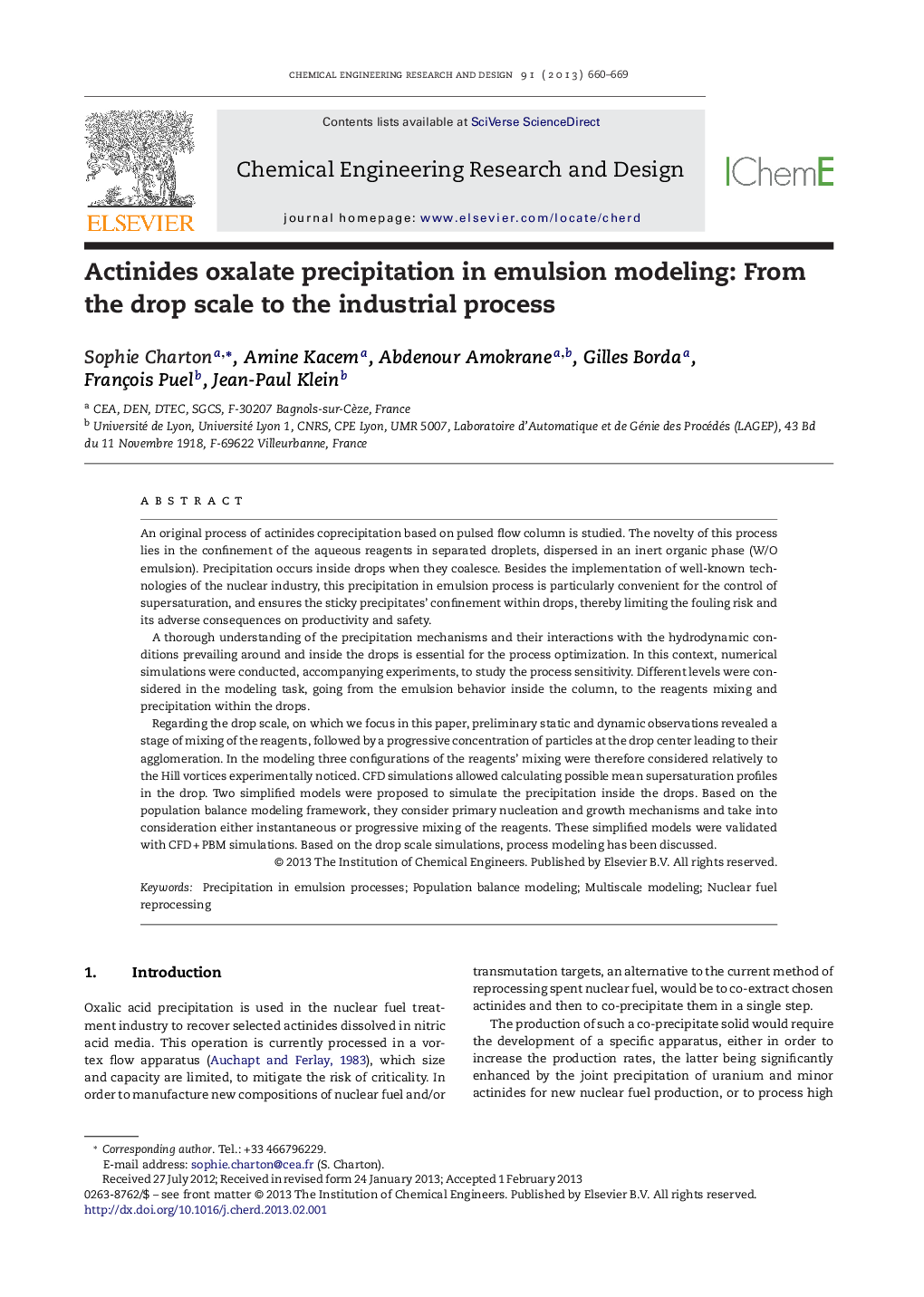| کد مقاله | کد نشریه | سال انتشار | مقاله انگلیسی | نسخه تمام متن |
|---|---|---|---|---|
| 621247 | 882544 | 2013 | 10 صفحه PDF | دانلود رایگان |

An original process of actinides coprecipitation based on pulsed flow column is studied. The novelty of this process lies in the confinement of the aqueous reagents in separated droplets, dispersed in an inert organic phase (W/O emulsion). Precipitation occurs inside drops when they coalesce. Besides the implementation of well-known technologies of the nuclear industry, this precipitation in emulsion process is particularly convenient for the control of supersaturation, and ensures the sticky precipitates’ confinement within drops, thereby limiting the fouling risk and its adverse consequences on productivity and safety.A thorough understanding of the precipitation mechanisms and their interactions with the hydrodynamic conditions prevailing around and inside the drops is essential for the process optimization. In this context, numerical simulations were conducted, accompanying experiments, to study the process sensitivity. Different levels were considered in the modeling task, going from the emulsion behavior inside the column, to the reagents mixing and precipitation within the drops.Regarding the drop scale, on which we focus in this paper, preliminary static and dynamic observations revealed a stage of mixing of the reagents, followed by a progressive concentration of particles at the drop center leading to their agglomeration. In the modeling three configurations of the reagents’ mixing were therefore considered relatively to the Hill vortices experimentally noticed. CFD simulations allowed calculating possible mean supersaturation profiles in the drop. Two simplified models were proposed to simulate the precipitation inside the drops. Based on the population balance modeling framework, they consider primary nucleation and growth mechanisms and take into consideration either instantaneous or progressive mixing of the reagents. These simplified models were validated with CFD + PBM simulations. Based on the drop scale simulations, process modeling has been discussed.
► An original precipitation process, based on liquid–liquid emulsion, is studied at various levels.
► Heterogeneous reaction is modeled at the droplets level.
► The influence of local flow patterns around the drops is studied in terms of internal mixing.
► Coupled PBD + CFD simulations are compared to simplified models in order to establish a compartmental model of the reactor.
Journal: Chemical Engineering Research and Design - Volume 91, Issue 4, April 2013, Pages 660–669